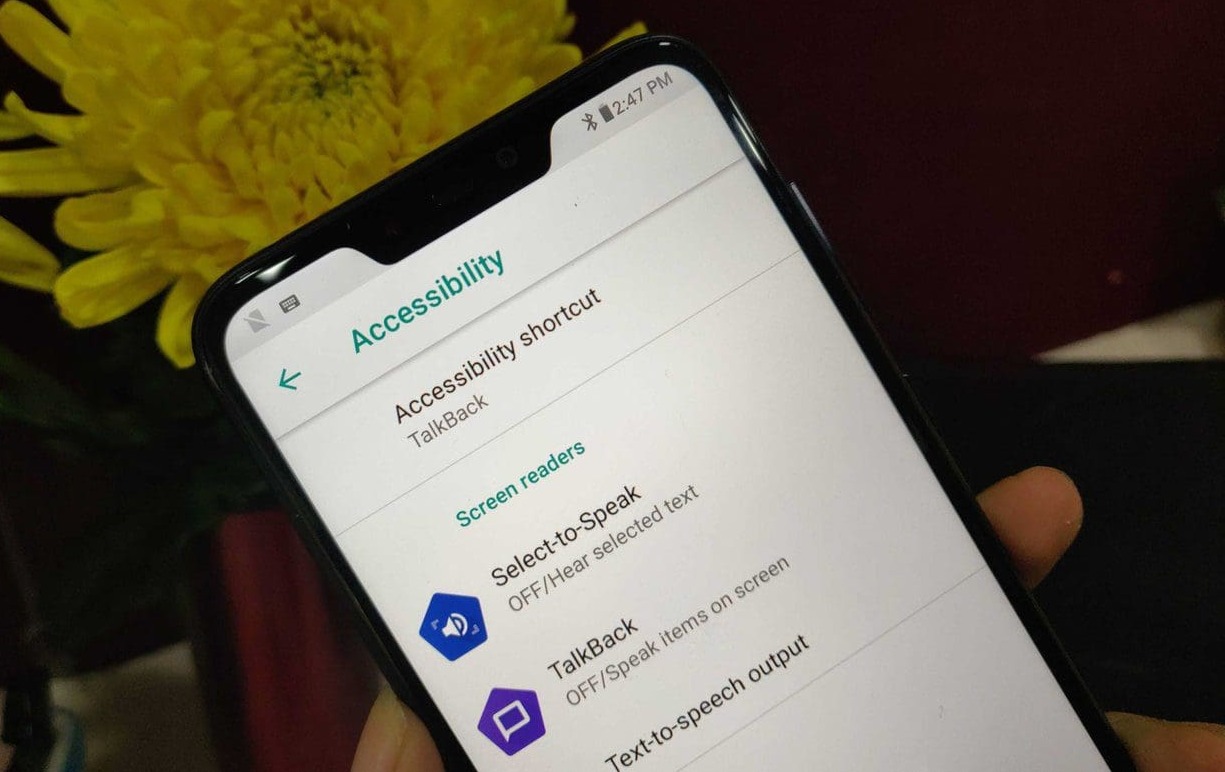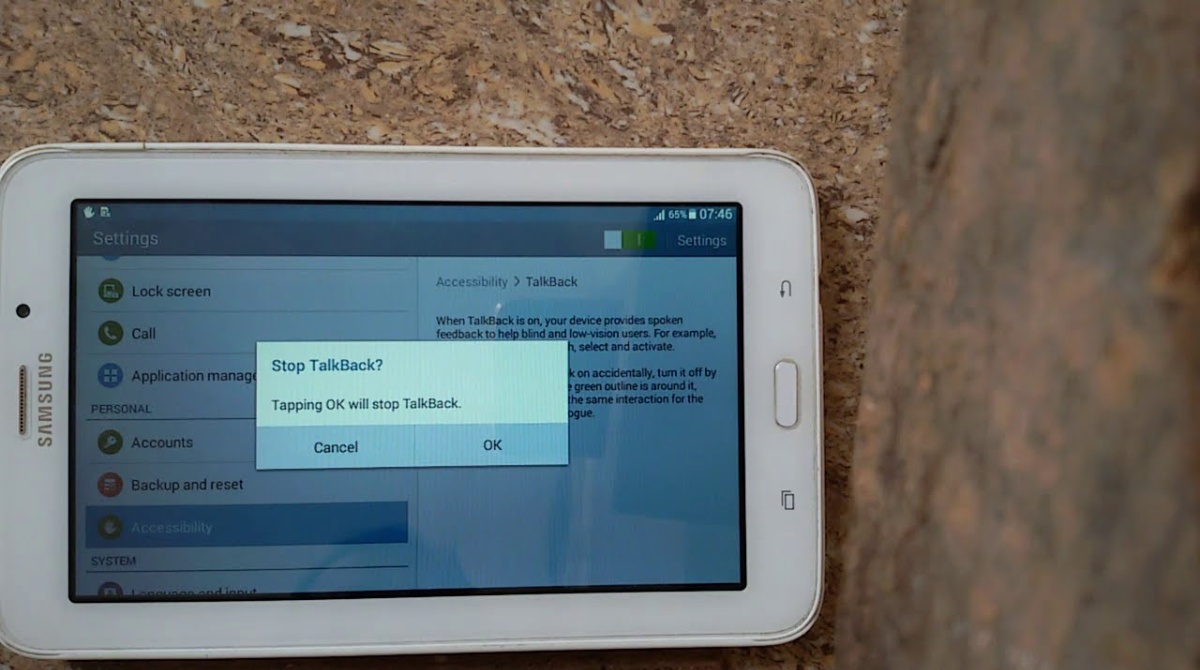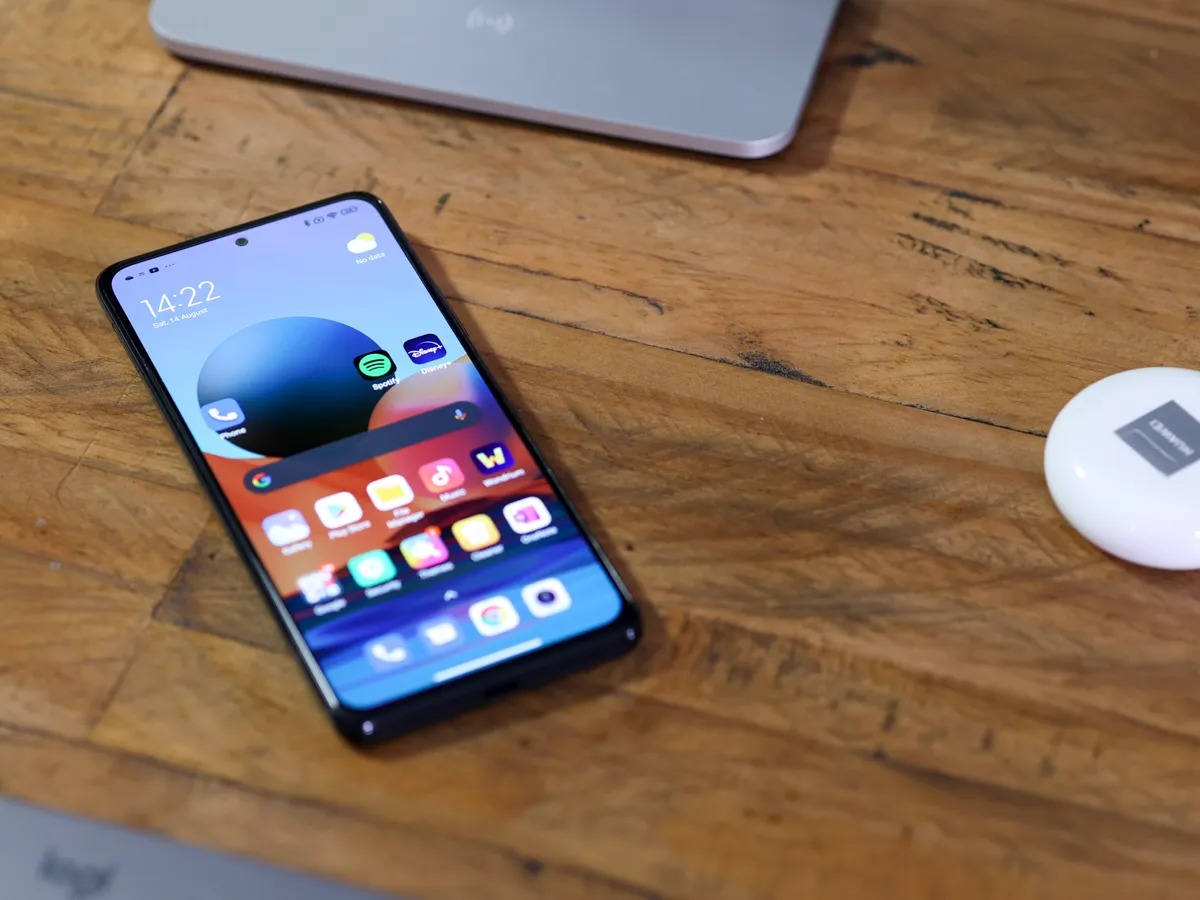Introduction
Welcome to our guide on how to turn off Talkback on your Android device. Talkback is an accessibility feature designed to assist individuals with visual impairments in navigating their devices through spoken feedback. While Talkback can be incredibly useful for those who need it, it can also be accidentally activated, causing frustration for users who may not be familiar with its functionality.
In this article, we will explore the different methods you can use to disable Talkback on your Android device. Whether you prefer using the accessibility shortcut, navigating through the settings menu, utilizing physical buttons, or even using voice commands, we’ve got you covered.
Just keep in mind that Talkback may vary slightly depending on the make and model of your Android device, as well as the version of the operating system you are running. However, the general steps outlined in this guide should provide you with the necessary information to easily turn off Talkback and regain control of your device.
Before we dive into the different methods, it’s important to understand what Talkback is and how it works on Android devices.
What is Talkback?
Talkback is an accessibility feature available on Android devices that provides spoken feedback to individuals with visual impairments. It essentially converts the visual information displayed on the screen into spoken feedback, allowing users to interact with their device using touch and gestures.
When Talkback is enabled, your device will read out loud the text displayed on the screen, announce buttons and icons, describe images, and provide guidance for navigating through apps and menus. This feature is particularly helpful for individuals who are blind or have low vision, as it allows them to independently use and navigate their Android device.
Talkback utilizes the built-in screen reader technology of Android devices to provide this auditory feedback. It uses a synthesized voice to read out the text and other elements on the screen, providing users with real-time information and assistance in operating their device.
With Talkback enabled, users can navigate through their device using gestures or physical buttons, such as swiping or double-tapping to interact with elements on the screen. Talkback will audibly confirm actions and provide contextual information as users perform various gestures.
While Talkback is a valuable accessibility tool, it can sometimes be activated accidentally, causing confusion and difficulties for users who may not be familiar with its functionalities. In situations like these, it’s essential to know how to disable Talkback to regain control over your Android device.
In the following sections, we will guide you through the steps to access the Talkback settings and explore different methods to turn off Talkback on your Android device.
How to Access the Talkback Settings
Before you can turn off Talkback on your Android device, you need to have access to the Talkback settings. Here’s how you can access them:
- On your Android device, go to the Settings app. You can usually find the Settings app in your app drawer or by swiping down from the top of the screen and tapping on the gear icon.
- In the Settings menu, scroll down and look for the Accessibility option. The location of the Accessibility option may vary depending on the make and model of your device. It is usually found under the “System” or “Device” section.
- Tap on Accessibility to enter the Accessibility settings.
- Within the Accessibility settings, you will find a list of available accessibility features. Look for the option labeled Talkback or Voice Assistant and tap on it.
By following these steps, you should now be in the Talkback settings, where you can configure and disable the Talkback feature. The Talkback settings may have additional options and customization features, allowing you to adjust the spoken feedback to your preference.
Now that you know how to access the Talkback settings, let’s explore different methods to turn off Talkback on your Android device.
Turning Off Talkback on Android
Once you have accessed the Talkback settings on your Android device, you can proceed to turn off Talkback by following one of the methods described below:
Method 1: Using the Accessibility Shortcut
Many Android devices offer an accessibility shortcut that allows you to quickly enable or disable Talkback. Here’s how you can use this method:
- On your Android device, press and hold the Power button until the power menu appears.
- In the power menu, look for the option labeled Accessibility or Accessibility Options and tap on it.
- In the Accessibility options menu, you should see the Talkback or Voice Assistant option. Tap on it to disable Talkback.
Method 2: Through the Settings Menu
If your device does not have an accessibility shortcut, you can disable Talkback through the settings menu:
- Go to the Talkback settings by following the steps mentioned in the previous section.
- Once you are in the Talkback settings, you will see a toggle switch labeled Talkback or Voice Assistant. Simply tap on the switch to turn off Talkback.
Method 3: Using the Physical Buttons
If you prefer using physical buttons to navigate through your device, you can use this method to disable Talkback:
- On your Android device, press and hold the Volume Up and Volume Down buttons simultaneously for a few seconds until Talkback is turned off.
- Your device may ask for confirmation to turn off Talkback. Follow the on-screen instructions to disable the feature.
Method 4: Using Voice Commands
If you have enabled voice recognition on your Android device, you can use voice commands to disable Talkback:
- Activate voice recognition by saying the wake-up command that you have set for your device (e.g., “Hey Google” or “OK Google”).
- Say the command “Turn off Talkback” or “Disable Voice Assistant” to disable Talkback.
These methods should help you easily turn off Talkback on your Android device. However, if you encounter any issues or face difficulties in disabling Talkback, refer to the troubleshooting section below for some common solutions.
Method 1: Using the Accessibility Shortcut
If your Android device offers an accessibility shortcut, you can quickly enable or disable Talkback by following these steps:
- Press and hold the Power button on your Android device. This will bring up the power menu.
- In the power menu, look for the option labeled Accessibility or Accessibility Options. It may be represented by an icon depicting a person or a gear.
- Tap on the Accessibility option to access the accessibility settings.
- In the accessibility settings, you should find the Talkback or Voice Assistant option. Tap on it to enable or disable Talkback.
By using the accessibility shortcut, you can quickly toggle Talkback on and off without having to navigate through multiple menus. This can be especially useful if you frequently need to switch between using Talkback and the regular interface of your Android device.
Note that the location and labeling of the accessibility shortcut may vary depending on your device’s manufacturer and Android version. If you are unable to locate the shortcut in the power menu, you can try looking for it in the quick settings panel or the accessibility settings menu itself.
Once you have successfully disabled Talkback using the accessibility shortcut, your device will revert to its normal operation, providing visual feedback instead of spoken feedback for navigating the interface.
If you are still experiencing difficulties with Talkback or need additional methods to turn off the feature, continue reading the following sections for alternative solutions.
Method 2: Through the Settings Menu
If your Android device does not have an accessibility shortcut, you can still easily disable Talkback by following these steps:
- Start by opening the Settings app on your Android device. You can usually find the Settings app in your app drawer or by swiping down from the top of the screen and tapping on the gear icon.
- In the Settings menu, scroll down and look for the Accessibility option. The position of the Accessibility option may vary depending on your device, but it is typically located in the “System” or “Device” section.
- Tap on the Accessibility option to enter the Accessibility settings.
- Within the Accessibility settings, you should see a list of available accessibility features. Look for the option labeled Talkback or Voice Assistant and tap on it to access the Talkback settings.
- Once you are in the Talkback settings, you will find a toggle switch labeled Talkback or Voice Assistant. Simply tap on the switch to turn off Talkback.
By navigating through the settings menu, you can easily disable Talkback and revert to the regular interface of your Android device. This method is straightforward and useful when you have more time or prefer accessing settings through the system menu.
Keep in mind that the terminology and layout of the settings menu may differ slightly depending on your device’s manufacturer and Android version. However, the general instructions provided should help you locate the Talkback settings and toggle off the feature.
If you are still encountering any difficulties or require alternative methods to disable Talkback, continue reading the subsequent sections for additional solutions.
Method 3: Using the Physical Buttons
If you prefer using physical buttons to navigate through your Android device, you can use this method to disable Talkback:
- On your Android device, press and hold the Volume Up and Volume Down buttons simultaneously for a few seconds. This action will trigger a command in Talkback and bring up a dialog box.
- In the dialog box, your device will ask for your confirmation to turn off Talkback. Depending on your device, you may need to use the volume buttons to navigate to the “OK” or “Turn Off” option and then press the power button to select it.
By using the physical buttons on your Android device, you can quickly disable Talkback without the need to access any menus or settings. This method is especially handy if you find it challenging to navigate through touch gestures or if the touchscreen is unresponsive.
Please note that the specific combination of physical buttons to trigger Talkback commands and disable the feature may vary depending on your device’s manufacturer and Android version. If the above instructions do not work for your device, consult your device manual or the manufacturer’s website for the appropriate button combination to disable Talkback.
If you still encounter difficulties with Talkback or require additional methods to turn off the feature, continue reading the subsequent sections for alternative solutions.
Method 4: Using Voice Commands
If you have enabled voice recognition on your Android device, you can use voice commands to disable Talkback. Here’s how you can do it:
- Activate the voice recognition feature on your Android device by saying the wake-up command that you have set, such as “Hey Google” or “OK Google”. This will prompt your device to listen for voice input.
- Once the voice recognition is activated, simply say the command “Turn off Talkback” or “Disable Voice Assistant” to disable Talkback on your device.
- Depending on your device settings, you may need to provide additional confirmation or answer a security question before Talkback is disabled.
Using voice commands to disable Talkback offers a convenient hands-free method, allowing you to control your Android device without the need for physical interaction. It is particularly beneficial for users who have limited dexterity or prefer voice-based control.
Keep in mind that voice commands may vary depending on the voice recognition software on your device. Be sure to use the voice command that is compatible with your device’s voice assistant, such as Google Assistant or Amazon Alexa.
If you encounter any issues or difficulties with Talkback or require alternative methods to disable the feature, continue reading the troubleshooting section below for possible solutions.
Troubleshooting Common Issues
While disabling Talkback on your Android device is typically a straightforward process, you may come across some common issues. Here are a few troubleshooting steps you can take to resolve them:
1. Touchscreen Unresponsiveness
If the touchscreen is unresponsive or not functioning properly, it may be challenging to navigate through the Talkback settings. In such cases, try restarting your device or perform a soft reset by holding down the power button for a few seconds until the device restarts. This may resolve any temporary software or hardware issues causing the touchscreen problem.
2. Talkback Not Listed in Accessibility Settings
If you are unable to find the Talkback or Voice Assistant option in the Accessibility settings, it may indicate that Talkback is not enabled on your device. In this case, you don’t have to worry about disabling it. However, if you are experiencing undesired spoken feedback, you may want to check if any other accessibility features are causing the issue.
3. Voice Commands Not Recognized
If your device is not recognizing the voice commands to disable Talkback, ensure that you are using the correct wake-up command to activate the voice recognition software. Additionally, check your device’s microphone for any obstructions and ensure the voice recognition settings are properly configured.
4. Talkback Automatically Re-Enables
In some cases, Talkback may automatically re-enable itself after being disabled. This can occur if there are certain system or app updates that conflict with the Talkback settings. To resolve this issue, make sure your device’s operating system and apps are up to date. If the problem persists, you can try disabling any other accessibility features that may be interfering with Talkback.
If you continue to face difficulties with Talkback or encounter other specific issues, it is recommended to visit the support website of your device manufacturer or consult their customer support for further assistance.
Conclusion
Turning off Talkback on your Android device is essential when you no longer need the spoken feedback or if it was accidentally enabled. Whether you prefer using the accessibility shortcut, navigating through the settings menu, utilizing physical buttons, or even using voice commands, this guide has provided you with various methods to disable Talkback.
Remember to access the Talkback settings through the accessibility options in the Settings menu. From there, you can easily toggle Talkback on or off, customize its settings, and regain control of your Android device.
If you encounter any difficulties or issues during the process, consider troubleshooting the common problems discussed in this guide. Restarting your device, ensuring voice commands are recognized, and keeping your device and apps updated can help resolve many Talkback-related issues.
By disabling Talkback, you can revert to the regular interface of your Android device and operate it according to your preferences. However, if you ever need to re-enable Talkback in the future, you can follow the same steps outlined in this guide.
We hope this article has been helpful to you in understanding how to turn off Talkback on your Android device. If you have any further questions or need additional assistance, don’t hesitate to reach out to the support resources provided by your device manufacturer.
Now go ahead and disable Talkback if you no longer require its spoken feedback, and enjoy exploring and using your Android device in a way that suits you best!






















